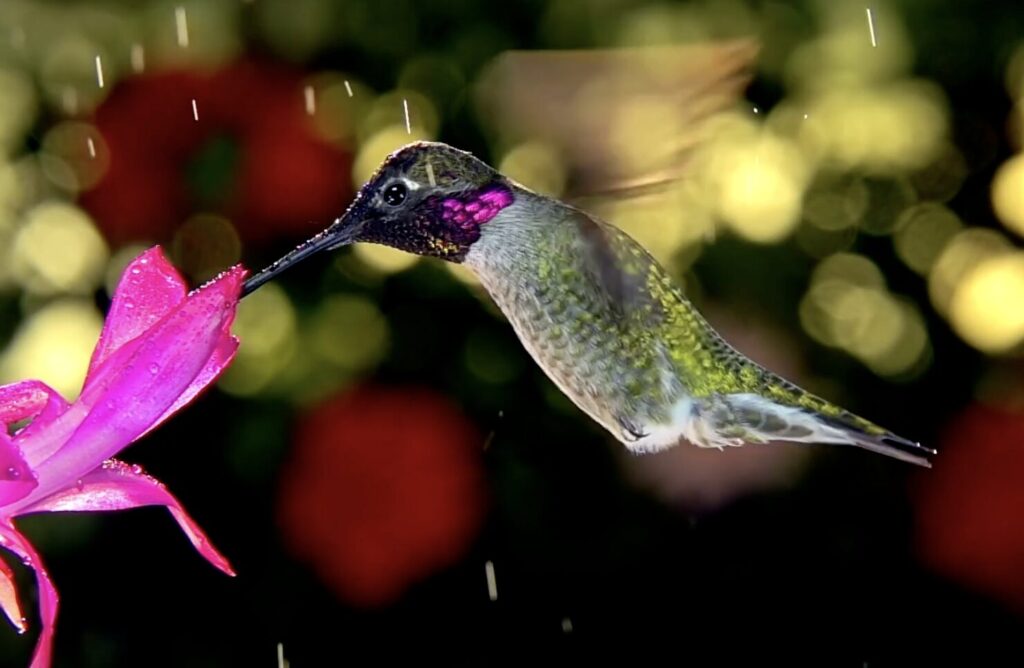
Attracting hummingbirds to your yard is not only a joy to watch, but they offer a variety of ecological, aesthetic, and practical benefits.
Why Do You Want Hummingbirds in Your Yard?
Pollination Helpers
Hummingbirds are excellent pollinators, especially for tubular flowers like salvia, columbine, and trumpet vine. As they feed on nectar, they transfer pollen from flower to flower, helping plants reproduce and boosting your garden’s overall health and yield.
Encourage Flower Bloom
Because they feed frequently, hummingbirds encourage plants to produce more flowers to keep up with nectar demand. This can result in more vibrant and abundant blooms throughout the season.
Natural Pest Control
In addition to nectar, hummingbirds consume small insects and spiders for protein. This helps control pest populations in your garden, reducing the need for chemical pesticides.
Support Biodiversity
Creating a hummingbird-friendly garden, rich in native flowering plants and free of harmful chemicals. This can attract other beneficial wildlife like bees, butterflies, and ladybugs.
What are Flowers that Attract Hummingbirds?
These plants come back every year and are particularly easy for hummingbirds to spot.
- Coral Honeysuckle (Lonicera sempervirens): A native vine with tubular red-orange flowers — a hummingbird magnet!
- Bee Balm (Monarda didyma): Bright red, pink, or purple flowers. Also loved by bees and butterflies.
- Cardinal Flower (Lobelia cardinalis): Tall spikes of vivid red blooms; loves moist soil, ideal near ponds or shady spots.
- Salvia (Salvia greggii, Salvia guaranitica): Long-blooming with blue, purple, or red flowers; drought-tolerant and loved by hummers.
- Columbine (Aquilegia canadensis): Nodding, red and yellow flowers in early spring — a perfect early food source.
Colorful Annuals
Annuals must be replanted each year but often bloom profusely.
- Zinnias: Bright, cheerful flowers that are easy to grow.
- Petunias: Especially varieties with trumpet-shaped blooms; plant in sunny beds or containers.
- Cuphea (Cuphea ignea – ‘Cigar Plant’): Tubular red-orange flowers that hummingbirds absolutely love.
- Impatiens: Good for shady areas; choose varieties with vivid colors.
Shrubs and Trees
These larger plants provide structure and season-long food.
- Bottlebrush (Callistemon): Bristly red flowers that hummingbirds adore.
- Azaleas (especially native types like Rhododendron canescens): Bloom early in spring — early season nectar source.
- Red Buckeye (Aesculus pavia): Native small tree with beautiful red flowers.
Important Planting Tips for Atlanta
- Sun: Most hummingbird plants thrive in full sun to partial shade.
- Bloom Season: Plant a mix to ensure blooms from early spring through fall.
- Clusters: Plant in groups to make it easier for hummingbirds to spot the flowers.
